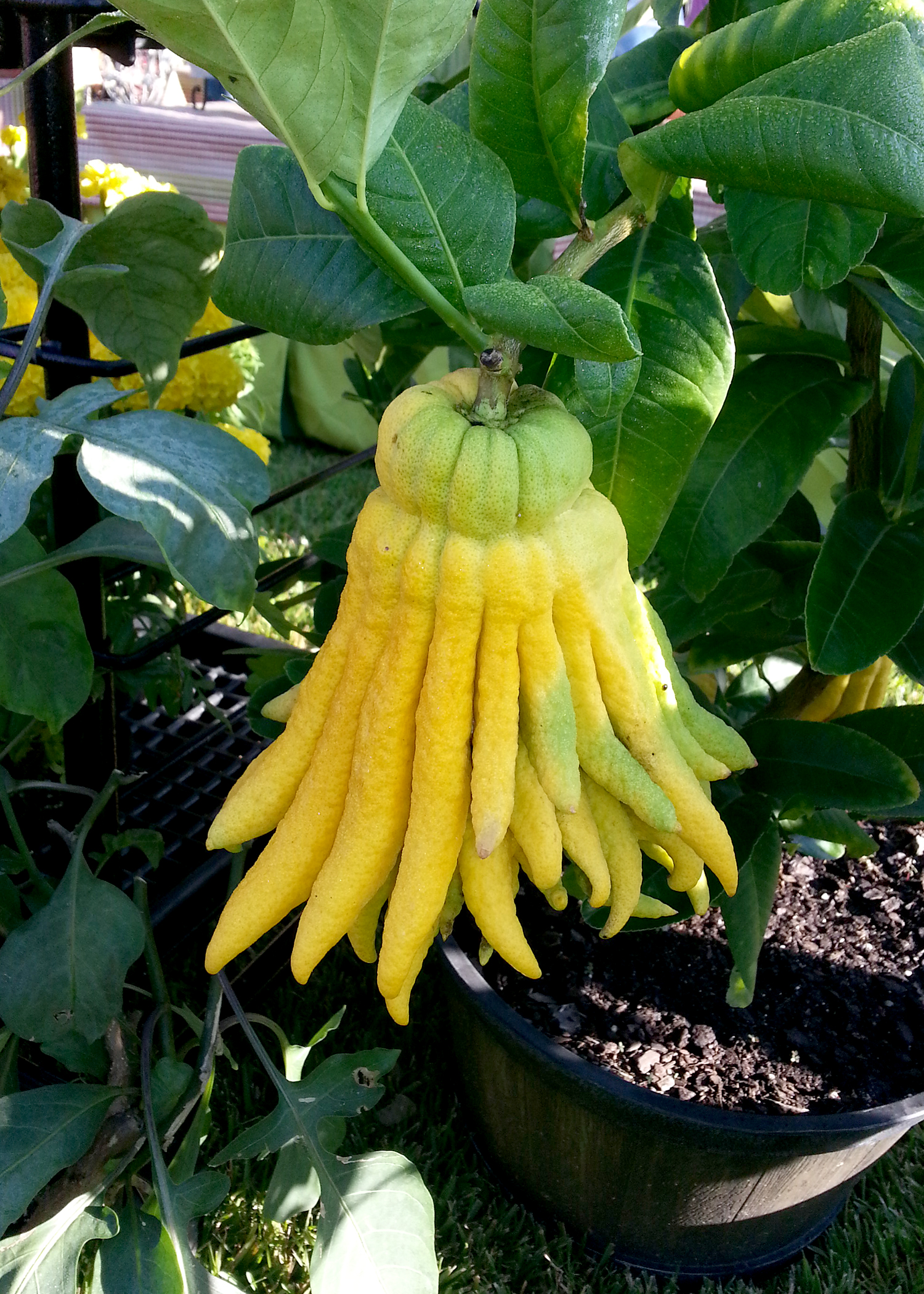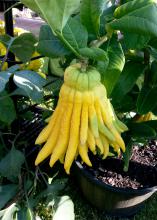Information Possibly Outdated
The information presented on this page was originally released on October 24, 2016. It may not be outdated, but please search our site for more current information. If you plan to quote or reference this information in a publication, please check with the Extension specialist or author before proceeding.
Use containers to grow mobile citrus orchards
I like the changing of the seasons, as it means we get to plant a new set of color annuals like pansies, violas and dianthuses. The cooler weather draws us back out to enjoy gardening activities, many of which were put on hold in the heat of the summer.
Another reason I always look forward to the fall weather is that it means my citrus trees are about to reward my family with homegrown goodness.
This past year, I expanded my citrus grove -- all grown in 25-gallon containers. I now have four satsumas, three Meyer lemons, three kumquats and one Buddha Hand citron.
Growing my own citrus is one of the best gardening endeavors I have ever undertaken. The satsumas are just starting turn orange, and in about a month, these easy-to-peel treats will be ready to enjoy.
I also enjoy Meyer lemons, which are not like the tart, thick-skinned grocery store offerings. They are a long-ago cross between a lemon and an orange and are thin-skinned and really sweet. Each year, my crop is destined for a batch of homemade limoncello, which is a holiday family tradition.
The kumquats are really delicious, and unlike other citrus, you basically just eat the peel.
The strangest citrus I’m growing this year is the Buddha Hand, which looks like some kind of orange gone wild. The multifingered fruit has a remarkable, hand-like appearance, but it is actually bigger than most peoples’ hands. It has no juice, but the fruit is used as zest for flavoring or is candied for use in holiday fruit cakes.
Buddha Hand is the most frost sensitive of my grove. It is perfectly happy grown in its container, so I can bring inside during cold snaps.
Citrus must be protected from low temperatures, so I planted all my trees in containers that I can move into the garage for protection. This precaution is especially important because citrus trees are grafted, and the graft union is susceptible to freeze damage.
Each year, I get a question about a homeowner’s citrus tree having different fruit than it had the previous year. Generally, what happened is the graft died for some reason, usually cold damage, and the rootstock is now dominant. A clue to this happening is the appearance of thorns on the branches.
This year, I had some new visitors to my citrus grove. A couple of weeks ago, I noticed what looked like bird droppings on some leaves. It turns out they are actually the caterpillars of the Giant Swallowtail butterfly, and citrus happens to be one of their preferred host plants.
The “bird dropping” mimicry is a defense against predators. Young caterpillars are found in plain view in areas where bird droppings would be expected, hence their very descriptive common name, bird-dropping caterpillars. Larger caterpillars are often called orange dogs and usually are found resting on stems or leaf petioles. I’ve enjoyed watching these guys munch the leaves of my satsuma and Meyer lemon trees as they grow. I’m going to keep an eye out for their brownish chrysalis.
Growing citrus is fairly easy in coastal counties, but gardeners in the northern counties don’t need to be left out of the fun. Extension Publication 2542, “Growing Citrus in Containers in Mississippi,” http://extension.msstate.edu/publications/publications/growing-citrus-containers-mississippi, is an excellent guide for gardening success for growing citrus in your garden and landscape.




